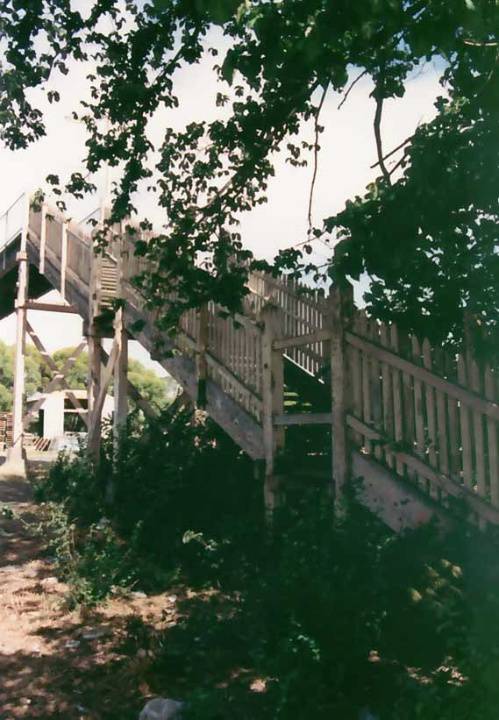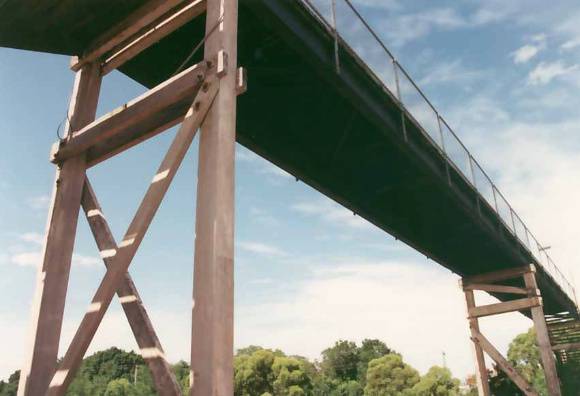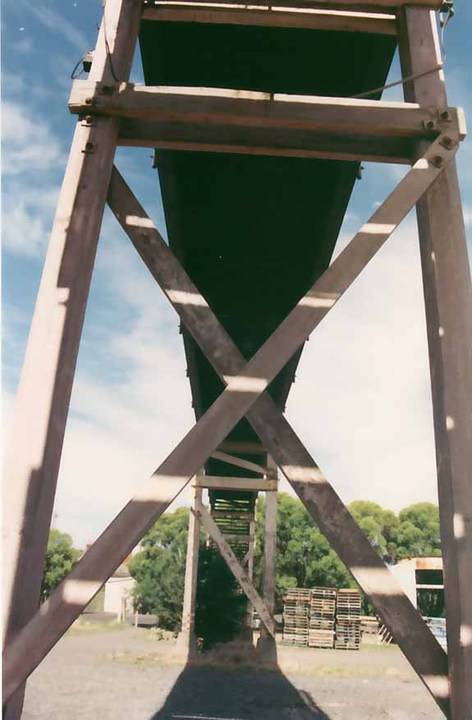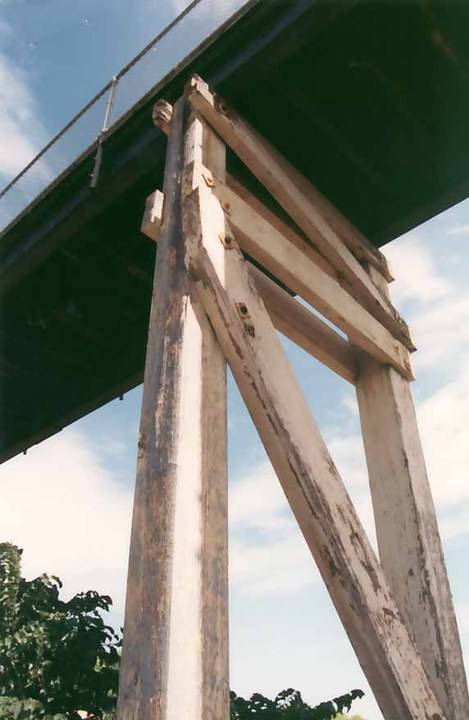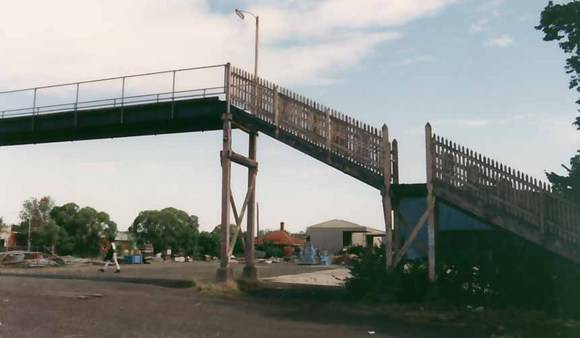| Back to search results » | Back to search page » |
|
Former North Fitzroy Railway Footbridge
LocationMcKean Street extension between Napier and Jamieson Streets,, FITZROY NORTH VIC 3068 - Property No B7125
File NumberB7125LevelDemolished/Removed |
|
Statement of Significance
The North Fitzroy Railway Footbridge is historically and scientifically (technically) significant at a Regional Level.
Built in 1900, with modifications to heighten its main spans in 1915, and replace the main span timber trusses with steel beams in 1924, the footbridge crosses a former goods yard at the southern end of the former Fitzroy Railway, a short branch line extending from the Inner Circle Railway that was used primarily for goods traffic for much of its one hundred year history. The bridge is still relatively intact although it has been out of use since the early 1980s, and is a rare and unusually large surviving example of a once commonplace form of standard Victorian Railways footbridge.
Historically, the Fitzroy Railway Footbridge is important both as the last substantial above ground structure relating to the former Fitzroy Branch Railway, and as a prominent local landmark and reminder of the once extensive Fitzroy Railway station goods yards. Over much of the 20th century generations of local residents used the footbridge to access the adjacent Fitzroy Football Ground or to walk to and from the shops and tramstop in Brunswick Street. For a century it has been a prominent and familiar part of the North Fitzroy landscape, providing a rare vantage point from which pedestrians could see as far as the city spires and skyscrapers.
The Fitzroy Railway Footbridge is also technically significant as the longest and second highest surviving railway footbridge of its type in the metropolitan area, with an overall length of 68.0 metres over 12 spans, including two main spans of 13.8 metres each and three flights of wooden steps with intermediate landings at either end. It is of unusual height for a structure of this type as most Victorian Railways footbridges had only two flights of approach steps at either end. Its estimated clear height of 5.2 metres between the rail level and underside of the main span beams is only slightly less than the 5.5 metre clearance of the Kensington Railway Footbridge, which appears to be the greatest in the metropolitan area. The Fitzroy Railway Footbridge retains now rare original style timber picket fences on its approach steps and landings and timber piers throughout, with evidence of the modifications made in 1915 to heighten the bridge.
Although no longer in its original as-built form, the Fitzroy Railway Footbridge remains very intact with respect to its modified 1920s design. Today it still reflects the standard form of composite timber and steel footbridge developed as an evolution of earlier all-timber designs under the Victorian Railways design branch, during the first three decades of the 20th century. Since the replacement of the Leongatha Railway Footbridge in 1996, there are no surviving Victorian Railways footbridges with timber truss main spans similar to those of the Fitzroy bridge when originally built. All other comparable railway footbridges were similarly modified during the early 20th century as part of an extensive upgrading program. The changes made at this time are sympathetic and reflect an aptation of the original design as new materials became available. As such they should be viewed as an important part of the bridge's history, rather than an unwelcome or intrusive modification.
Classified: 'Regional' 04/06/2001
Foot Note: The footbridge was dismantled c2000 with the view to relocation and reconstruction at the Moorooduc 'station' by the Mornington Peninsula Tourist Railway.
Group
Transport - Rail
Category
Railway Bridge/ Viaduct




